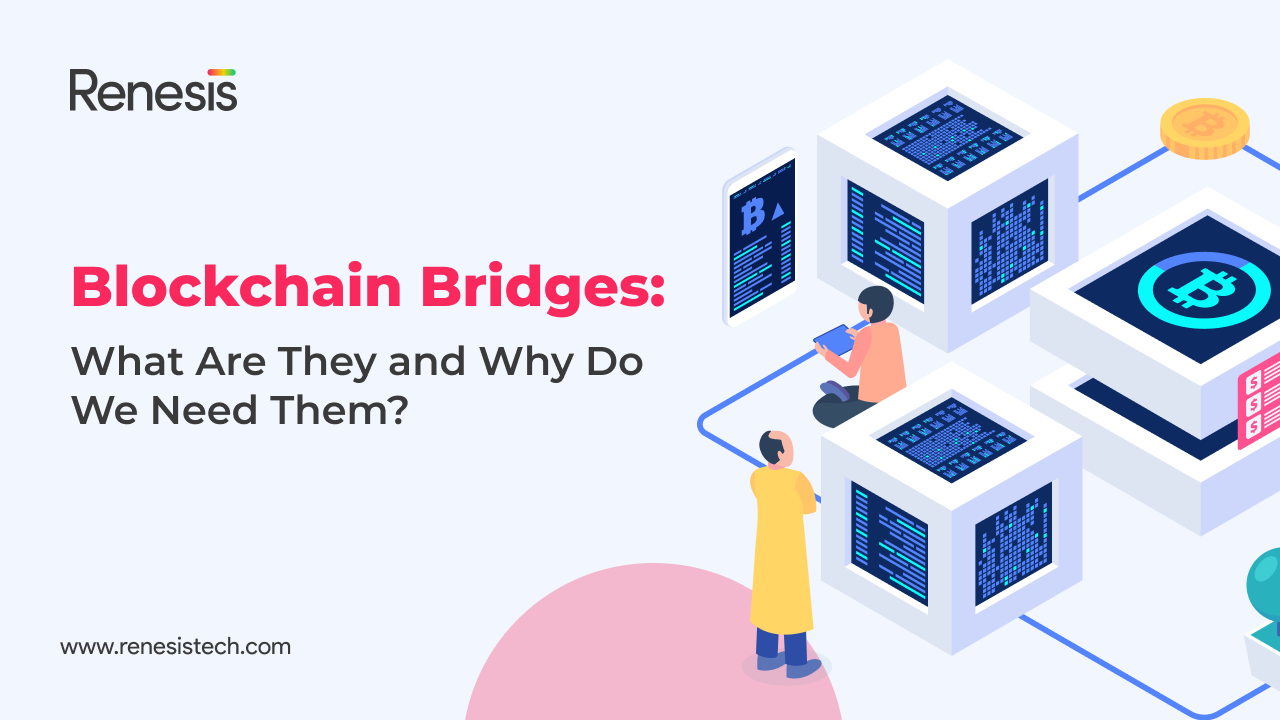Blockchain Bridges: What are They and Why We Need Them?
Is blockchain Bridges something you’re trying to understand? It can be difficult to understand blockchain technology and DeFi’s financial and technical jargon.
It becomes easier to manage if we break it down into smaller pieces. So, let’s simplify the concept of blockchain bridges and understand it better.
In this article, we will explain what blockchain bridges are, their purpose, and finally, the types of bridges.
What are Blockchain Bridges?
A blockchain bridge allows users to move cryptocurrency between two blockchains, also known as a cross-chain bridge. You can use the bridge if you have bitcoin but want to spend it like Ethereum.
Why Do We Need Blockchain Bridges?
During the development and expansion of the blockchain space, one of the biggest limitations has been the inability of different blockchains to work together.
Each blockchain is limited by its own boundaries, even though it is fluid and somewhat efficient as a single entity. This can lead to high transaction costs and congestion most of the time.
Through blockchain bridges, token transfers, smart contracts, data exchange, and other feedback and instructions can be exchanged between two independent platforms.
Users can switch between these blockchains smoothly by utilizing the bridge as a neutral zone; each blockchain mints different coins and operates according to different rules.
Blockchain bridges offer other benefits besides enabling cross-chain transfers. By doing so, they enable users to access new blockchain protocols on other chains, as well as collaborate with developers from different blockchain communities.
Therefore, blockchain bridges are essential to establishing an interoperable blockchain future.
How Do Blockchain Bridges Work?
There are a lot of cool things a blockchain bridge can do, including converting smart contracts and sending data, but token transfers are the most common use.
For example, you want to transfer your bitcoin (BTC) to the Ethereum network. One way is to sell your BTC and then purchase ether (ETH).
By using a blockchain bridge, bitcoin users can transfer their coins to Ethereum and do with them what they couldn’t do with bitcoin.
A blockchain bridge contract will lock 1 BTC in an Ethereum wallet and create an equivalent amount of Wrapped BTC (WBTC), an Ethereum ERC20 token. Tokens are issued or minted on the destination blockchain network equivalent to the amount of BTC you wish to port.
Types of Blockchain Bridges
One-way bridges, such as unidirectional bridges, allow you to port assets only to the target blockchain. Based on their functions, mechanisms, and levels of centralization, blockchain bridges can be classified as:
Custodial vs. Non-Custodial Bridges
A custodial bridge (also known as a trusted or centralized bridge) requires users to trust a central entity to operate it appropriately and safely. In order to determine the trustworthiness of this entity, users should conduct extensive research.
Non-Custodial Bridges or trustless bridges operate in a decentralized manner, using smart contracts to handle crypto locking and minting processes, eliminating the need for trust in a bridge operation. In this case, the system’s security is as good as the underlying code.
Benefits of Blockchain Bridges
Interoperability is the most significant benefit of blockchain bridges. By creating a cross-chain protocol, tokens, assets, and data can be exchanged between layers 1 and 2, as well as between sidechains.
For Instance, with WBTC, bitcoin users can explore the decentralized applications (Dapps) and DeFi services available in the Ethereum ecosystem. Developing an interoperable blockchain sector is critical to the success of the industry.
Future of Blockchain Bridges
Interoperability is one of the reasons the internet is considered a revolutionary system. Interoperability and mass adoption of blockchains rely heavily on blockchain bridges. The technology has enabled users to exchange assets between different blockchain protocols, enabling some essential innovations.
Bridges, users, and the total volume of transactions on blockchains have grown significantly over the last few years. It enables users to access the benefits of different blockchain technologies without having to choose between platforms.
This helps to alleviate the pressure from Ethereum and invites innovations from other ecosystems.
Stay up-to-date on key developments in the DeFi space by following Renesis’s blog.










